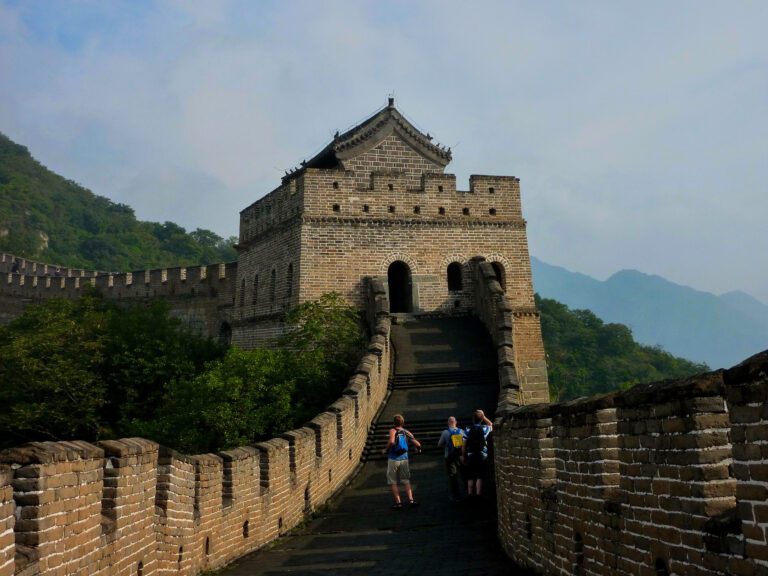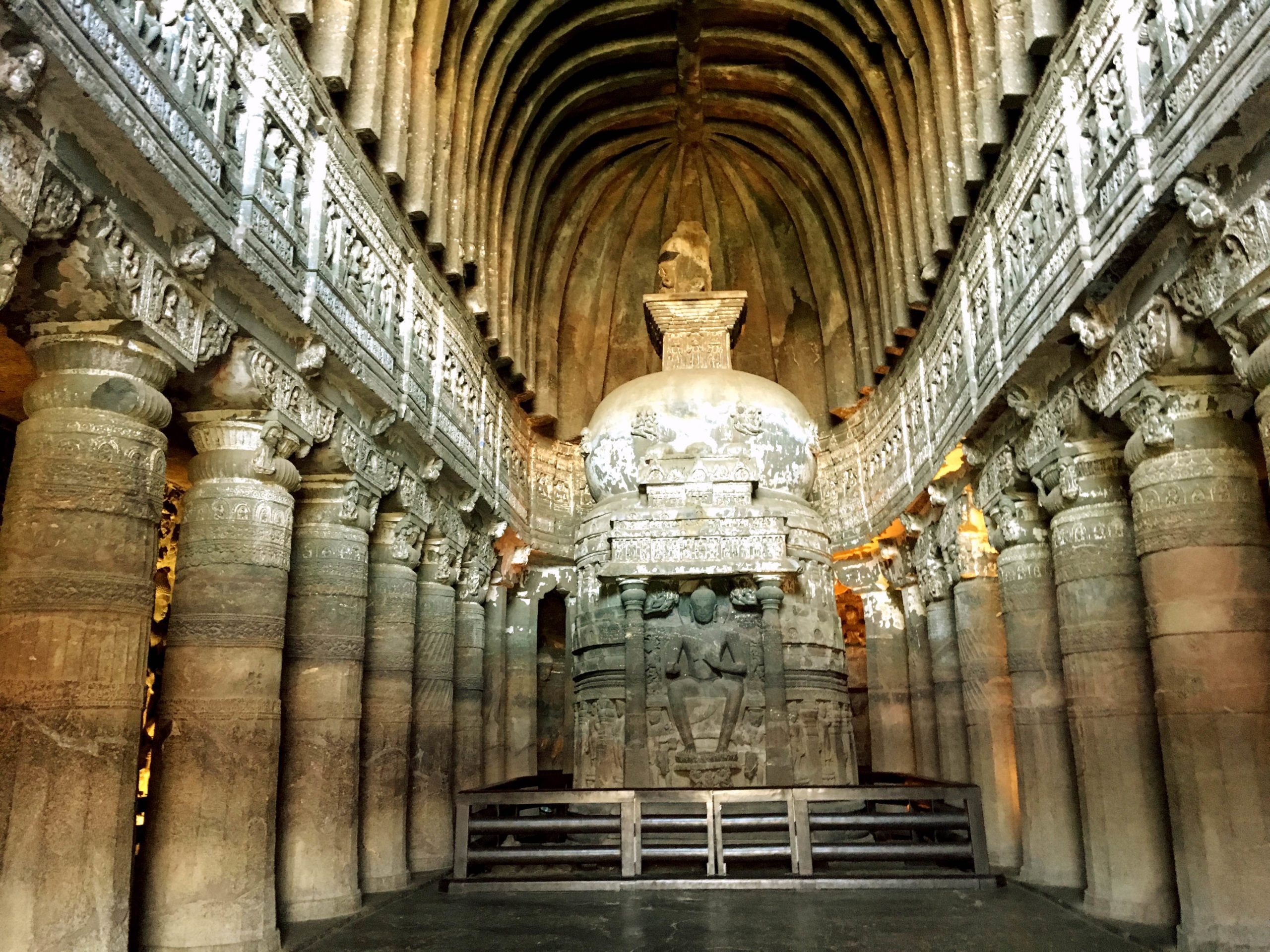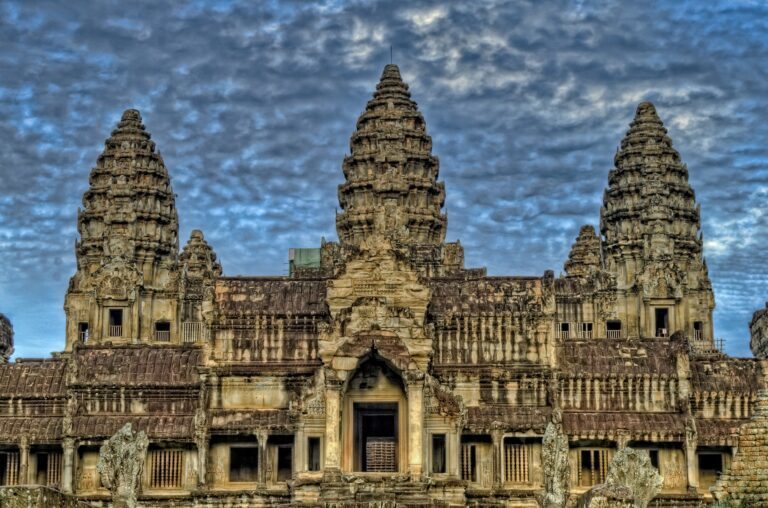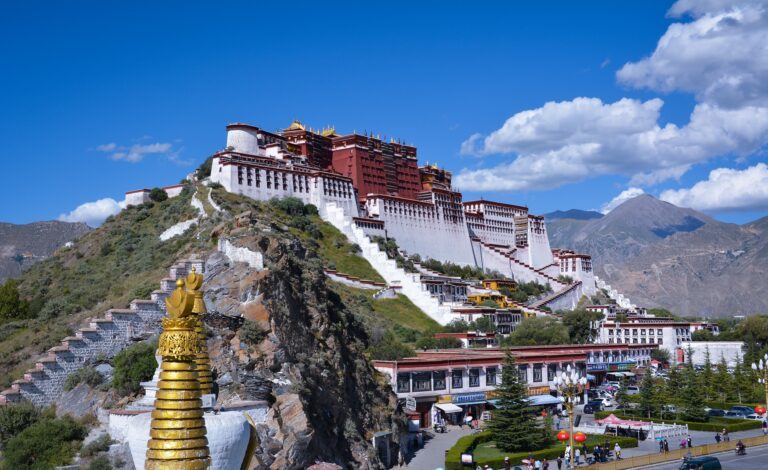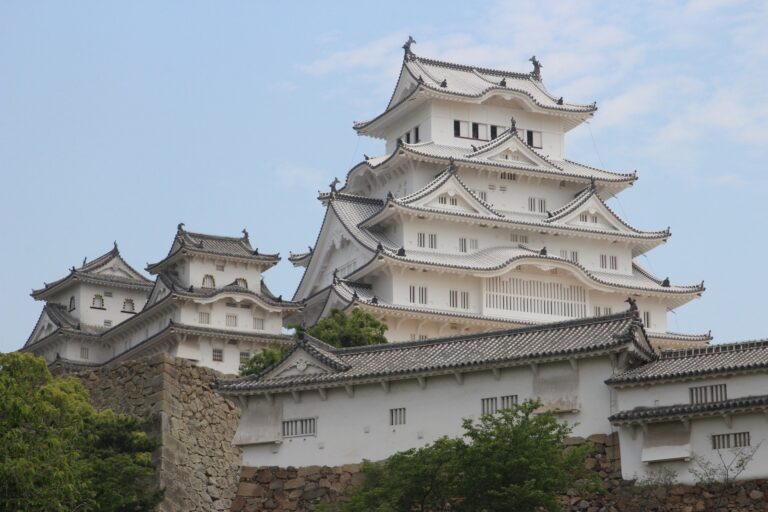The Taj Mahal is a world-famous architectural masterpiece located in Agra, India. It is renowned for its stunning beauty and historical significance. As a paragon of Mughal architecture, an exquisite fusion of Indian, Persian, and Islamic styles, the Taj Mahal captivates with its well-balanced proportions and harmonious embellishments. Surrounding it are enchanting gardens, a museum, and twin mosques flanking the mausoleum. Here are some key facts about the Taj Mahal:
Taj Mahal History and Facts
1. Construction: The Taj Mahal, a magnificent tomb crafted from pristine white marble, graces the right bank of the Yamuna River, nestled within the Indian district of Agra, in the state of Uttar Pradesh. Commissioned by the illustrious Mughal Emperor Shah Jahan, it stands as a solemn tribute to his beloved wife, Mumtaz Mahal, who departed from this world in 1631.
Rich in artistry and history, this architectural marvel was created over the course of a 22-year labor of love that started in 1632 and ended in 1648, with the addition of additional structures and landscaping requiring additional time.
Architectural Style of Taj Mahal
2. Architectural Style: The Taj Mahal is a prime example of Mughal architecture, which combines elements from Persian, Islamic, and Indian architectural styles. It is known for its perfect symmetry and intricate design. The Taj Mahal, a pristine white marvel, features a square plinth with four identical sides, each graced by a colossal central arch, standing at a towering height of 108 feet.
At its apex, the central dome is 240 feet tall, and its interior acoustics produce a resounding note. The ornate interior houses marble tombs, enveloped by a delicately filigreed marble curtain, while the actual sarcophagi rest beneath, at garden level.
Four graceful minarets elegantly stand at each corner of the plinth, with two identical structures flanking the garden’s northern and northeastern ends. These structures, made of red Sikri sandstone, add contrast to the white marble of the mausoleum.
Facts about Taj Mahal India
3. Materials: The main building is constructed using white marble, which was quarried from the nearby town of Makrana. The marble is adorned with semi-precious stones and intricate carvings. At its heart, a symmetrical garden unfolds, flanked by two oblong compartments.
The mausoleum, a resplendent structure of white marble adorned with semiprecious stone inlay, graces one side, while the entrance gateway takes its place on the other. This complex also includes two red sandstone buildings: a mosque on one side, mirrored by an identical structure on the other.
The main tomb, constructed on a marble base, is crowned with four minarets that grace its four corners. The grand red sandstone entrance at the south end of the complex boasts an intricately carved arch, embellished with Quranic inscriptions and floral motifs inlaid into the white marble paneling. Flanking arches and ornate minarets grace both sides of the gateway, creating an enchanting entrance.
4. Dome: The most iconic feature of the Taj Mahal is its large central dome, which is surrounded by four smaller domes. The central dome is flanked by four minarets, which lean slightly outward to prevent them from falling onto the main tomb in case of an earthquake.
The Taj Mahal’s central dome, an iconic feature, is surrounded by four smaller domes. Its beauty is complemented by intricate calligraphy, bearing verses from the Quran elegantly scribed in Arabic script, and meticulously carved architectural details.
5. Gardens: The Taj Mahal is surrounded by beautiful gardens, which are divided into four main parts by a raised pathway. The gardens are designed in the Persian Charbagh (four gardens) style, symbolizing the four rivers of Paradise mentioned in Islamic tradition.
The exquisite garden, designed in the Mughal style, features long waterways, square walking paths, fountains, and lush greenery, all enclosed by the complex’s walls and buildings. It sets the stage for the dramatic entrance to the mausoleum and is reflected in the garden’s central pools.
6. Calligraphy: The Taj Mahal is adorned with intricate calligraphy, with verses from the Quran written in elegant Arabic script. The calligraphy is one of the distinctive features of the monument. Throughout the Taj Mahal, pietra dura and Arabic calligraphy are prominent ornamental elements.
Pietra dura, an exquisite Mughal technique, employs semiprecious stones like lapis lazuli, jade, crystal, turquoise, and amethyst to create intricate geometric and floral patterns, balancing the grandeur of Makrana marble. Arabic calligraphy graces the edifice, and some inscriptions on the sandstone entryway, like “Daybreak” (89:28–30), extend a welcome to the faithful.
Taj Mahal History
7. Historical Significance: The Taj Mahal is not only a symbol of love but also a UNESCO World Heritage Site and one of the most recognizable landmarks in the world. It is often considered a masterpiece of Indian and Islamic architecture. The Taj Mahal’s cultural significance has often been influenced by India’s political landscape.
Night viewing was prohibited from 1984 to 2004 due to concerns about potential attacks by Sikh militants. Additionally, debates around its origins and construction have sometimes downplayed Muslim influence, despite its undeniable status as an architectural masterpiece and a testament to the enduring power of love and artistry.
8. Legend: There’s a fascinating legend surrounding the Taj Mahal that says Shah Jahan planned to construct a black marble replica of the Taj Mahal for himself on the other side of the Yamuna River. The mausoleum would have been constructed to house his own remains and would have been connected to the Taj Mahal by a bridge. However, political turmoil, financial constraints, and his ousting by his son, Aurangzeb, in 1658 condemned this vision to remain unrealized.
9. Conservation: The Taj Mahal has faced threats from pollution, particularly the yellowing of its white marble due to air pollution. Conservation efforts have been made to protect and preserve this cultural treasure. The Taj Mahal has not been immune to the ravages of time. In the early 20th century, Lord Curzon, the British Viceroy of India, initiated comprehensive restoration efforts.
In recent years, air pollution from nearby industries and vehicular traffic has posed a threat to the monument’s marble façade. Mitigation measures include closing down some foundries and implementing pollution-control technologies, as well as establishing a protective buffer zone and banning automobile traffic around the site.
10. Visitors: Millions of tourists from around the world visit the Taj Mahal each year, making it one of the most popular tourist destinations in India. Drawing millions of visitors annually, the Taj Mahal’s construction was overseen by numerous architects of the time, likely initiated by Ustad Ahmad Lahawri, a Persian-Indian architect.
The complex consists of the entrance gate, gardens, mosque, jawab (meaning “answer,” mirroring the mosque), and mausoleum, all designed as an indivisible entity according to Mughal construction principles.
The endeavor commenced in 1632 and engaged the labor of nearly 20,000 people from India, Persia, the Ottoman Empire, and Europe, with the main tomb completed by 1638 or 1639. The Taj Mahal stands as a symbol of love and artistic achievement, and it continues to captivate people with its timeless beauty and historical significance.

